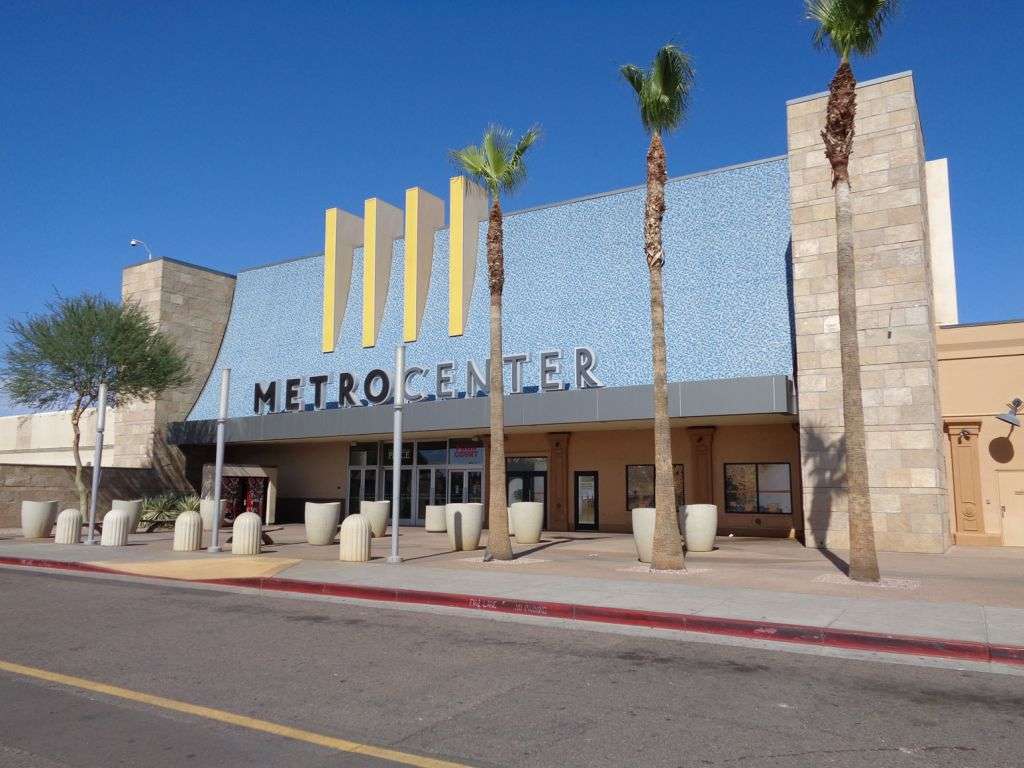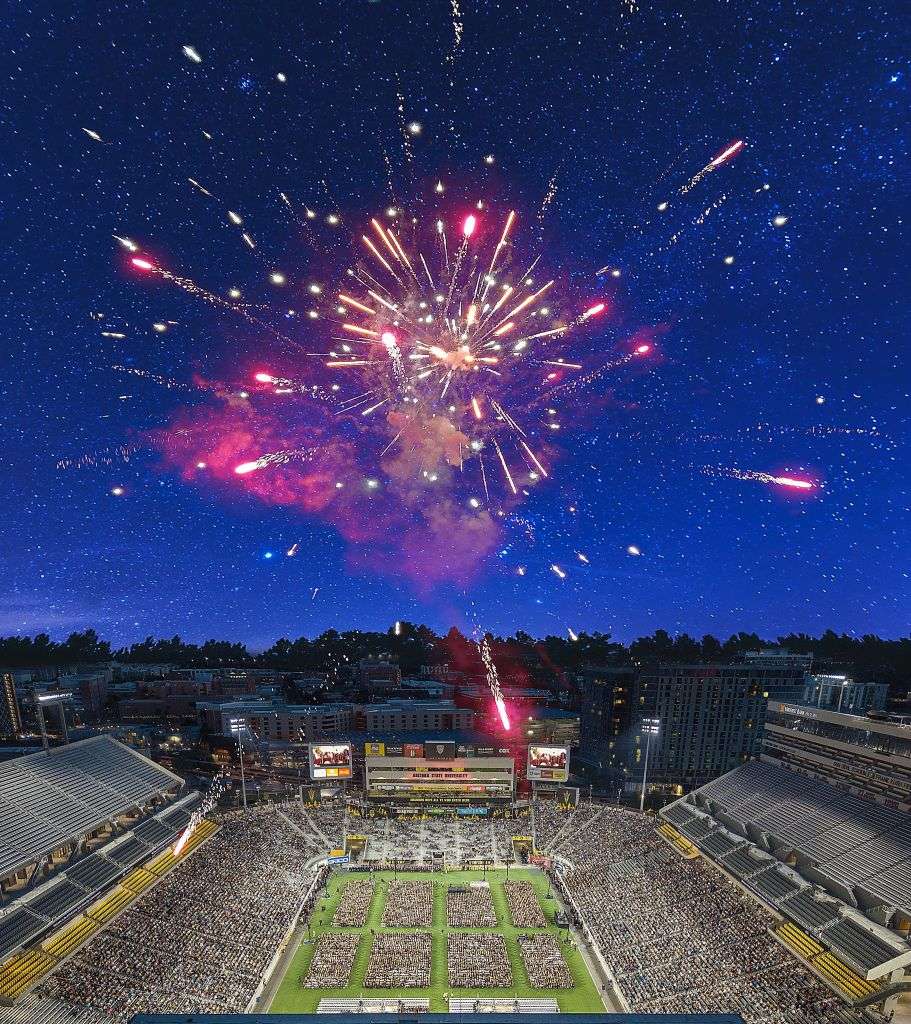
Multiple sectors booming in the Valley as 2023 is off to a strong start
From major sporting events to more commercial construction and tech expansion, several sectors in Arizona are expected to stay strong and continue growing. Here you can read about the impact Super Bowl LVII had on the sports and tourism sector as well where Arizona’s technology and mining sectors are expected to be headed in the future.
Phoenix multifamily investment opportunities continue to rise
Phoenix continues to rank highly across the country as it made the Top 10 for multifamily investment in 2023 according to the CONTI Index compiled by CONTI capital—a location analysis technology platform that identifies the ideal locations for multifamily investments.
Phoenix also currently has the single strongest market for overall employment across the 50 markets tracked by the Conti Index. With over 277,000 new people having moved to Phoenix over the past five years, Phoenix ranks 2nd for sheer number of in-migrants across the 50 markets. The average annual change for overall employment, courtesy of AZ Commerce Authority, is +4.2% while the top 5 sectors remain even higher: Personal Care and Service (6.3%); Arts, Design, Entertainment, Sports, and Media (5.9%); Healthcare Support (5.7%); Construction and Extraction (5.6%); and Transportation and Material Moving (5.5%).

More multifamily construction may be on the way in Casa Grande as the City Council will soon vote on a rezoning plan that could bring 1,200 homes and up to 2,500 apartment units to a new master-planned community. Angela Gonzales with Phoenix Business Journal reported that the new community, which sits on $23 million land, is expected to have smaller plot sizes and a higher density of starter homes and apartments.
Anita Verma-Lallian is leading a syndication to develop the master-planned community through her Phoenix-based Arizona Land Consulting firm. “We have a mix of 50-foot, 45-foot and 60-foot lots — what people are looking for in markets like Casa Grande for starter homes,” she said. “That’s the product type in highest demand right now.”



Large commercial construction projects taking place in the Valley
Ron Davis with Phoenix Business Journal reported that the Dodge Construction Network ranked Phoenix No. 7 on a list of 10 metros with the largest value in construction starts in 2022. Total development costs of projects increased 34% year over year from $6.3 billion in 2021 to $8.4 billion. New York ranked No.1 at $37.1 billion in construction starts, followed by Dallas-Fort Worth at $11.4 billion.
One of the largest contributing projects in Phoenix was the second phase of LPC Desert West’s Park303, a $460 million development in Glendale. The second phase broke ground in March 2022 and is expected to include a 629,835-SF facility on 38 acres, a 483,000-SF facility on 30 acres and a 1.26 million-SF facility on 72 acres.
Another large project was phase one of the Hub@202, a $224 million development near Phoenix-Mesa Gateway Airport expected to include 11 buildings totaling 1.5 million square feet of class A industrial space.
Other large multifamily real estate projects included LG Development Group’s 29-story, residential and retail building totaling about 1 million square feet in downtown Phoenix at $345 million in construction; as well as Hatteras Sky’s 23-story high-rise apartment tower called Saiya valued at $184 million in development costs. A report by the Arizona Office of Economic Opportunity found that the state’s construction workforce had a 5% year-over-year increase between November 2021 and November 2022, likely due to the retirement of older workers in the industry and new opportunities brought in by the demand for new construction.
Additionally, Davis reported that the Lake Biltmore Corporate Center, located north of the Metrocenter Mall redevelopment, is undergoing a multimillion dollar renovation to improve the building’s infrastructure and utility. The property totals 102,000-SF across two buildings and 6.9 acres with a mix of title companies, real estate brokerages, law firms and accounting agency tenants. Exact costs of the renovations have not been disclosed.



“The transformation of Metrocenter Mall has become a powerful economic driver for this trade area, creating an exciting ripple effect for projects situated all around the mall property,” said Harold Dorenbecher, president of HCD Consulting. “The reimagined Lake Biltmore Corporate Center will bring this asset up to modern specifications, making it one of the nicest office buildings in the area, with a focus on providing the lifestyle and workplace amenities that today’s employees and employers are prioritizing.”
Sports complexes taking the Valley by storm
Progress has been made on a new sports complex undergoing development in Glendale just west of the city’s bustling sports and entertainment district as reported by Angela Gonzalez with Phoenix Business Journal. The indoor-outdoor complex, called Mangat Sports Complex or MG SportsPlex, is owned by the Glendale-based Mangat Group and will be located near the southwest corner of Northern and 99th Avenue along Loop 101.
It is set to feature a stadium-style championship field, two practice fields, stadium lighting, bleachers, and a 15,000-SF athlete dormitory complete with a fitness center, outdoor terrace, lounge areas, offices, and an open kitchen. Overall, the complex will host eight full-size basketball courts, volleyball courts with locker rooms, 32 regulation-size pickleball courts, a 500-seat championship court, concessions, and open seating for guests. The project is estimated to cost $130 million to $140 million and is slated to begin construction in early 2024 with expectations to open to the public by late 2024 or early 2025.



Tony Mangat, founder of Mangat Group, said, “Our idea is to make something very unique and helpful, thinking about not just athletes but parents. We want to make sure it fits everybody’s needs.”
Mangat has also proposed developing another sports complex in Buckeye with a $50 million price tag. The complex, MG Cricket Stadium, would feature a state-of-the-art soccer field, 20 practice batting cages, 50 practice pickleball courts, two championship pickleball courts, and a potential 20,000 seat stadium.
In January 2022, one of the largest youth and amateur sports complexes in the U.S. opened in Mesa. The complex, called Bell Bank Park, spans 320 acres and currently has another developer in the Valley proposing to build three hotels and two retail and restaurant buildings in order to support it.



Super Bowl LVII and the Waste Management Open set new records in the Valley
With the end of Super Bowl LVII and the Waste Management Open, the Valley is expected to surpass $1 billion in gross economic impact as reported by Arizona State University in an article with AZ Big Media. That money is expected to go to merchants, business owners, nonprofits and city and state coffers. The last time Arizona hosted the Super Bowl in 2015, it was estimated to pump about $750 million into the economy, according to the L. William Seidman Research Institute at the W.P. Carey School.
Anthony Evans, a senior research fellow for the consultancy arm of the W. P. Carey School of Business at ASU, provided a breakdown of the influx of dollars coming into the Valley before, during, and after the Super Bowl this year. In an interview with ASU News, Evans said the new dollars will have come from the NFL, 90K-110K visiting fans and their families, up to 5,800 visiting media, and major businesses that host events in the Valley.
Additionally, AZ Business Magazine reported that the Waste Management Open, one of the biggest tournaments in the PGA Tour, generated nearly half a billion dollars for the AZ economy, coming in at $453.7 million. In an economic impact study conducted by ASU, the reported total State of Arizona GDP contribution was $276.8 million with an annual employment impact of 4,290 jobs.
The Super Bowl and WM Open set new records for Arizona this year, including the single busiest day in Phoenix Sky Harbor International’s history. According to AZ Business Magazine, the airport saw 200,000 visitors come through on February 13th—compared to its daily average of 120,000 visitors. Over 90,000 passengers were screened with just under 84,000 of those getting screened by TSA through their checkpoints, making Sky Harbor the busiest airport in the nation that day. Nearly 50,000 people rode the PHX Sky Train, 14,700 rental cars were picked up or returned, and over 23,000 people were picked up or dropped off through rideshares.
“Super Bowl LVII set records across the City of Phoenix, and that could not be more evident than at our airport,” said Phoenix Mayor Kate Gallego. “These numbers speak to the appeal of Phoenix and Arizona as a destination for high caliber events. Our airport is our front door, and I couldn’t be more proud of the work that went into preparing for these record-breaking numbers.”
Arizona rising in sports and tourism sector as a hotspot for hosting
Thanks to high-profile events such as the Super Bowl, WM Open, and Scottsdale Arabian Horse Show, Arizona’s sports and tourism sector continues to boom. Nick Guptil-Chamber Business News shared a report by the Common Sense Institute (CSI) which found that $24.1 billion have been generated by this growing sector.
The report also showed that the sector employs 11% of Arizona’s total workforce and accounts for over 6% of the state’s total gross domestic product. “Direct sales by Arizona’s hotels, casinos, performance venues, and other components of the state’s sports & tourism sector in 2022” contributed $13.7 billion while businesses currently employ 167,000 workers directly and 200,000 indirectly.



Katie Ratlief, executive director of the Common Sense Institute, said that “Arizona’s moderate climate, excellent hospitality industry and major event spaces have made it a magnate tourism destination. This growing sector is a massive contributor to our economy, and big events like this weekend’s Super Bowl will only continue the momentum. Arizona’s hospitality industry is truly the ‘welcome mat’ for millions of visitors to our state.”
However, huge events such as the Super Bowl also place increased logistical demands on the hospitality sector to meet the needs of the temporary influx of people. Cronkite News reported that restaurants and hotels geared up to meet demands of incoming crowds by hiring temporary help and extending operating hours, as well as stocking up on inventory. The accommodation and food services industry was ranked the fourth most in-demand in Maricopa County by the Arizona Commerce, supporting over 190,000 employees in the first quarter of 2022.
“As you experience more of these major events, you get better at them, right,” said Steve Chucri, President and CEO of the Arizona Restaurant Association. “And so, we learn from the past, and it’s about progress, not perfection, but we learn from history. And so it makes us better at our craft.”



Arizona currently hosts professional teams in each of the U.S.’s top four sports leagues and the CSI think tank predicts that the sports and tourism sector will grow on average 3% a year over the next 10 years. With a moderate climate and numerous attractions, CSI believes that Arizona is “in a prime position to attract year-round tourism for major sports events such as the Super Bowl and the WM Phoenix Open.”
Other yearly events, like the Scottsdale Arabian Horse Show, continue to draw thousands from out of state and pump more dollars into the AZ economy. Aayush Gupta with Phoenix Business Journal wrote that a report by CH Johnson Consulting showed the 11-day horse show generates a local economic impact of $98 million. The report also showed that 48% of attendees are from out of state, 3.4% are from out of the country, and more than 10% of attendees have incomes exceeding $250,000 a year. Additionally, many wealthy horse owners purchase second homes and open company offices in Scottsdale, generating more exposure and tourism dollars for Scottsdale.
California fast food chain expanding in Arizona
Brandon Brown with Phoenix Business Journal reported that Farmer Boys, a fast food chain based in California, opened its second Arizona location in southwest Phoenix in late 2022. Chrystalla Herry, the Farmer Boys franchisee, purposely chose an industrial area in Tolleson to open the new location, which was a move against current trends of targeting high-density, high-income areas for new eateries.
Herry said that the restaurants have a proven track record of success in industrial areas and the Farmer Boys’ focus on fresh produce and meat with a made-to-order production style allows them to better serve the communities and workers in those areas. Herry began working at Farmer Boys at 16 as a cashier and stayed with the company, working her way up to manager and eventually owning her own franchise.
“We like to develop from within and grow our people,” said Herry.
The first Farmer Boys location opened in Gilbert in 2021 and a third location is set to open later this year in the Tempe Market Station development which is currently under construction on Rio Salado Parkway in Tempe. Farmer Boys has a total of 102 locations across California, Nevada, and Arizona—with Phoenix targeted as its next major growth market.
Mining and tech sectors remain strong in Arizona
According to Amy Eden with Phoenix Business Journal, a semiconductor modification and contract manufacturing company announced that it began operations at its Peoria plant. HyRel Technologies chose to relocate to Arizona from California because of its thriving semiconductor industry and proximity to other semiconductor companies such as Taiwan Semiconductor Manufacturing Co. Hyrel services the aerospace, defense, medical, industrial and commercial industries. Additionally, the Peoria plant is expected to create 50 new jobs in the area.



In December, the Taiwan Semiconductor Manufacturing Co. announced plans to build a second fab in north Phoenix. Their investment will grow from $12 billion to $40 billion, making it one of the largest foreign direct investments in state and U.S. history.
Along with the increase in Arizona tech companies, the mining sector is setting its sights on Arizona as a potential hotspot to help the U.S. reshore its mining supply chain away from foreign countries. Steven Zylstra, president and CEO of the Arizona Technology Council, provided an overview of Arizona’s position in the mining industry in an article with Phoenix Business Journal.



Some of the state’s most productive industries—ranging from aerospace and defense to electronics and clean energy—rely on minerals like copper, nickel, cobalt and lithium. The total annual economic impact of Arizona’s mining industry is estimated to be at about $8 billion with employment of 40,000 Arizonans according to various reports in recent years.
Arizona is the leader in copper production as it is responsible for more than 70% of the nation’s copper output. It is also one of only five states that produces molybdenum—used in stainless steel and superalloys—and one of two states that produces rhenium, a byproduct of molybdenum processing that is a crucial component in jet aircraft engine alloys.
Now, all three of Arizona’s state universities are developing programs to train students to improve and advance statewide mineral production and refinement. The University of Arizona currently operates the nation’s only underground mining lab with a working vertical shaft, called the San Xavier Underground Mining Laboratory, while Northern Arizona University is working to reduce air emissions from the mining process by refining an air-capture system. Meanwhile, Arizona State University has researchers gaining thermodynamic information to improve critical mineral production.
Zylstra writes, “With our rich history, abundant natural resources and wealth of generational know-how, it just makes sense for Arizona to lead the U.S. into a new chapter of onshoring mining and accelerating technology advancement.”
Rise48 Equity has completed $1.8 Billion+ in total transactions since 2019, and currently has $1.4 Billion+ assets under management in the Phoenix MSA and Dallas, Texas.

